The balance of arithmetic is met with the continuing addition and division to subtract and to add what is the keel on the balance of mathematics itself. To continue to engage word to Arithmetic.
These balances must determine Babel to babble as the creek is at the river’s mouth for the waterfall? To what engagement is the mountain? A troubling ocean as the rock on the falls must again consider the volcano and it’s leap to such heat that water evaporates. There is no disguise to the volcano as the mountain must be considered a well? Where is the bridge to the mouth? As a roof is a word to the call of an echo where are these balances?
To begin the text to turmoil a tile is not the resident of arithmetic as that would only represent a shingle on the tree of press. To iron, to count, to ring, to age to determine is only one of those keels and yet the ship is on the news?
Babble: Creek: See previous post and see below as a beginning to determine the actual of what is Babel? To understand arithmetic and the in the beginning it is important to understand legend? What has happened to the mythology for the sciences to engage the King James Version as a study guide to break out the physics in arithmetic in word and not string the can along to only echo the shape of response by repose.
The story of Samson will suffice to carry the word to mythology as in Gulliver’s Travels the story of Lilliput will attach in physics to Lilith and Put(Set) in Egypt. Delilah can now arithmetic the mathematics to outline a basic word to what will develop the understanding of the Staff to continue the work on the spire. As this is an active course to the creek a river is on the rapids to what Cantore Arithmetic offers over current physics. This avenue of arithmetic shows that physics today without Cantore arithmetic is limited and only delivers a Nostradamus physical to count the days and never brings to fruition the purpose of why add. As such the next quantum development brought out of theory will suffice as Stephen Hawking said to believe in the theory of everything and had been discouraged at the works of Kurt Godel, suffered his work and now as explained through Cantore Arithmetic will deliver word out of that discouragement to categorize in arithmetic mathematics too:
Gödel's theorem may refer to any of several theorems developed by the mathematician Kurt Gödel:
Creek
A creek in North America and elsewhere, such as Australia, is a stream that is usually smaller than a river. In the British Isles it is a small tidal inlet.
Spire
A spire is a tall, slender, pointed structure on top of a roof of a building or tower, especially at the summit of church steeples.[1] A spire may have a square, circular, or polygonal plan, with a roughly conical or pyramidal shape.[1]Spires are typically made of stonework or brickwork, or else of timber structures with metal cladding, ceramic tiling, roof shingles, or slates on the exterior.[1]
Since towers supporting spires are usually square, square-plan spires emerge directly from the tower's walls, but octagonal spires are either built for a pyramidal transition section called a broach at the spire's base, or else freed spaces around the tower's summit for decorative elements like pinnacles.[1] The former solution is known as a broach spire.[1] Small or short spires are known as spikes, spirelets, or flèches.[1][2]
Etymology[edit]
This sense of the word spire is attested in English since the 1590s, spir having been used in Middle Low Germansince the 14th century, a form related to the Old English word spir, meaning a sprout, shoot, or stalk of grass.[3]
Gothic spires[edit]
The Gothic church spire originated in the 12th century as a simple, four-sided pyramidal structure on top of a church tower. The spire could be constructed of masonry, as at Salisbury Cathedral, or of wood covered with lead, as at Notre-Dame de Paris. Gradually, spires became taller, slimmer, and more complex in form. Triangular sections of masonry, called broaches were added to the sides, at an angle to the faces of the tower, as at St Columba, Cologne. In the 12th and 13th centuries, more ornament was added to the faces of the spires, particularly gabled dormers over the centres of the faces of the towers, as in the southwest tower of Chartres Cathedral. Additional vertical ornament, in the form of slender pinnacles in pyramid shapes, were often placed around the spires, to express the transition between the square base and the octagonal spire.[4]
The spires of the late 13th century achieved great height; one example was Fribourg Cathedral in Switzerland, where the gabled lantern and spire reached a height of 385 feet (117 meters). In England, a tall needle spire was sometimes constructed at the edge of tower, with pinnacles at the other corners. The western spires of Lichfield Cathedral are an example.[4]
Spires were particularly fragile in the wind, and a number of English Gothic spires collapsed; notably that of Malmesbury Abbey (1180–1500); Lincoln Cathedral (which had been the tallest in the world) 1349–1549; and Chichester Cathedral (1402–1861). The spire of Salisbury Cathedral, completed in 1320 and 404 feet (123 meters) tall, without the tower, required the addition of buttresses, arches and tie irons to keep it intact. Finally, in 1668 the architect Christopher Wren designed reinforcing beams which halted the deformation of the structure.[5]
Openwork spires were a notable architectural innovation, beginning with the spire at Freiburg Minster, in which the pierced stonework was held together by iron cramps. The openwork spire, represented a radical but logical extension of the Gothic tendency toward a skeletal structure.[6]
Crown spires[edit]
Crown spires have a fully exposed structure of arches not unlike the arches of a medieval European crown. The spire itself is supported by buttress structures.[1]
Needle-spires and Hertfordshire spikes[edit]
A needle-spire is a particularly tall and narrow spire emerging from a tower surrounded by a parapet. In general, the term applies to considerably larger and more refined spires than the name Hertfordshire spike.[1]
A Hertfordshire spike is a type of short spire, needle-spire, or flèche ringed with a parapet and found on church-towers in the British Isles.[1]
Splay-foot[edit]
The roofs of splay-foot spires open out and flatten off at their base, creating eaves above the tower supporting the spire.[1]
Flèches[edit]
A flèche (French: flèche, lit. 'arrow'[7]) is a name given to spires in Gothic architecture: in French the word is applied to any spire, but in English it has the technical meaning of a spirelet or spike on the rooftop of a building.[1][2] In particular, the spirelets often built atop the crossings of major churches in mediaeval French Gothic architecture are called flèches.[2]
On the ridge of the roof on top of the crossing (the intersection of the nave and the transepts) of a church, flèches were typically light, delicate, timber-framed constructions with a metallic sheath of lead or copper.[8] They are often richly decorated with architectural and sculptural embellishments: tracery, crockets, and miniature buttresses serve to adorn the flèche.[8]
The most famous flèche was the Neo-Gothic 19th-century design by Eugène Viollet-le-Duc for the Notre-Dame de Paris, 100 feet (30 meters) tall and richly decorated with sculpture. The original flèche of Notre-Dame was built in the 13th century, and removed in 1786, shortly before the French Revolution. The famous replacement by Viollet-le-Duc with an abundance of sculpture was destroyed in the 2019 Notre-Dame de Paris fire. It will be rebuilt in the same form.
Pinnacles[edit]
A pinnacle is a miniature spire that was used both as a decorative and functional element. In early Gothic, as at Notre-Dame de Paris, stone pinnacles were placed atop flying buttresses, to give them additional weight and stability, and to counterbalance the outward thrust from the rib vaults of the nave. As an ornament, they were used to break up the horizontal lines, such as parapets and the roofs of towers. In later Gothic, they were sometimes often clustered together into forests of vertical ornament.
Traditional types of spires[edit]
- Conical stone spires: These are usually found on circular towers and turrets, usually of small diameter.
- Masonry spires: These are found on medieval and revival churches and cathedrals, generally with towers that are square in plan. While masonry spires on a tower of small plan may be pyramidal, spires on towers of large plan are generally octagonal. The spire is supported on stone squinches which span the corners of the tower, making an octagonal plan. The spire of Salisbury Cathedral is of this type and is the tallest masonry spire in the world, remaining substantially intact since the 13th century. Other spires of this sort include the south spire of Chartres Cathedral, and the spires of Norwich Cathedral, Chichester Cathedral and Oxford Cathedral.
- Openwork spires: These spires are constructed of a network of stone tracery, which, being considerably lighter than a masonry spire, can be built to greater heights. Many famous tall spires are of this type, including the spires of Ulm Minster (the world's tallest church), Freiburg Minster, Strasbourg Cathedral, Vienna Cathedral, Prague Cathedral, Burgos Cathedral and the twin spires of Cologne Cathedral.
- Complex spires: These are stone spires that combine both masonry and openwork elements. Some such spires were constructed in the Gothic style, such as the north spire of Chartres Cathedral. They became increasingly common in Baroque architecture, and are a feature of Christopher Wren's churches.
- Clad spires: These are constructed with a wooden frame, often standing on a tower of brick or stone construction, but also occurring on wooden towers in countries where wooden buildings are prevalent. They are often clad in metal, such as copper or lead. They may also be tiled or shingled.
- Clad spires can take a variety of shapes. These include:
- Pyramidal spires, which may be of low profile, rising to a height not much greater than its width, or, more rarely, of high profile.
- Rhenish helm: This is a four-sided tower topped with a pyramidal roof. each of the four sides of the roof is rhomboid in form, with the long diagonal running from the apex of roof to one of the corners of the supporting tower; each side of the tower is thus topped with a gable from whose peak a ridge runs to the apex of the roof.
- Broach spires: These are octagonal spires sitting on a square tower, with a section of spire rising from each corner of the tower, and bridging the spaces between the corners and four of the sides.
- Bell-shaped spires: These spires, sometimes square in plan, occur mostly in Northern, Alpine and Eastern Europe, where they occur alternately with onion-shaped domes.
Notable spires[edit]
- Lincoln Cathedral's 525 foot (160 m) high medieval spire on the crossing tower was the tallest building in the world for 238 years (1311–1548) before its collapse. It was the first building to be taller than the Great Pyramid of Giza and nothing taller would be built until the Eiffel Tower was finished in 1889.
- Salisbury Cathedral's 404 foot (123 m) high spire on the crossing tower has been the tallest church spire in the British Isles since the collapse of Lincoln's crossing spire in 1548.
- St Mary's Church, Stralsund's 495 foot (151 m) high spire made it the tallest building in the world after the collapse of Lincoln's crossing spire in 1548 until 1569, when Beauvais Cathedral's tower exceeded it in height. Beauvais's tower collapsed in 1573, after which St Mary's remained the tallest building until 1647, when the spire was destroyed by lightning and subsequently replaced with a lower Baroque dome (excepting 1569–1573)
- Cologne Cathedral's 515 foot (157 m) high spires were built 1248 and 1473, but not completed, and again from 1842, still following faithfully the original plan, until their completions in 1880. The architecture of the spires blends entirely with the tower, making them difficult to separate. The combined tower-spires are 157 meters (515 feet) high.[9] The church is the tallest cathedral anywhere and has the tallest pair of spires.
- St Martin's Church, Landshut, spire whose Brick Gothic tower was finished in 1507, makes it the tallest brick-built church in the world, and the second tallest (unreinforced) brick building anywhere.
- The spire at Burghley House in England, built for Elizabeth I's Lord Chancellor in 1585 is an example of a spire on a non-religious building.
- The 123 metre spire of Antwerp Cathedral is the tallest ecclesiastical structure in the Low Countries.
- The 119 metre pair of spires of Uppsala Cathedral are the tallest in Scandinavia.
- Ulm Minster, a Lutheran church in Germany, has the distinction of having the tallest church tower in Europe, at 161.5 metres or 530 feet. The height was deliberately sought to make it slightly higher than the Catholic Cologne Cathedral.
- The Spire of Notre-Dame de Paris designed by Eugène Viollet-le-Duc was a famous flèche that crowned the crossing ridge of Notre-Dame de Paris between 1859 and 2019.
- The organic skeleton of Antoni Gaudi's spires at the Sagrada Família in Barcelona are a blend of Gothic and Gaudi's particular style. Designed and begun by Gaudi in 1884, they are still being completed in the early 21st century.
Religious symbolism[edit]
In Gothic architecture, where the spire is most commonly used, and particularly in Gothic cathedrals and churchesit symbolised the heavenly aspirations of churches' builders, as well as offering a visual spectacle of extreme height.[4] It also suggested, by its similarity to a spear point, the power and strength of religion.[10]
List of tallest spires (skyscraper)[edit]
Set (deity)
Set (/sɛt/; Egyptological: Sutekh - swtẖ ~ stẖ[a] or Greek: Seth /sɛθ/) is a god of deserts, storms, disorder, violence, and foreigners in ancient Egyptian religion.[4]: 269 In Ancient Greek, the god's name is given as Sēth(Σήθ). Set had a positive role where he accompanies Ra on his barque to repel Apep, the serpent of Chaos.[4]: 269 Set had a vital role as a reconciled combatant.[4]: 269 He was lord of the Red Land (desert), where he was the balance to Horus' role as lord of the Black Land (fertile land).[4]: 269
In the Osiris myth, the most important Egyptian myth, Set is portrayed as the usurper who murdered and mutilated his own brother, Osiris. Osiris's sister-wife, Isis, reassembled his corpse and resurrected her dead brother-husband with the help of the goddess Nephthys. The resurrection lasted long enough to conceive his son and heir, Horus. Horus sought revenge upon Set and many of the ancient Egyptian myths describe their conflicts.[5]
In ancient Egyptian astronomy, Set was commonly associated with the planet Mercury.[6]
Since he is related to the west of Nile which is the Sahara, he is sometimes associated with a lesser deity, Ha, god of the desert, which is a deity depicted as a man with a desert determinative on his head.
Family[edit]
Set is the son of Geb, the Earth, and Nut, the Sky; his siblings are Osiris, Isis, and Nephthys. He married Nephthys and fathered Anubis and in some accounts, he had relationships with the foreign goddesses Anat and Astarte.[4]: 270 From these relationships is said to be born a crocodile deity called Maga.[7]
Name origin[edit]
The meaning of the name Set is unknown but it is thought to have been originally pronounced *sūtiẖ [ˈsuw.tixʲ] based on spellings of his name in Egyptian hieroglyphs as stẖ and swtẖ.[8] The Late Egyptian spelling stš reflects the palatalization of ẖ while the eventual loss of the final consonant is recorded in spellings like swtj.[9] The Copticform of the name, ⲥⲏⲧ Sēt, is the basis for the English vocalization.[8][10]
Set animal[edit]
or or | |||||||||||
| |||||||||||
|---|---|---|---|---|---|---|---|---|---|---|---|
| Egyptian hieroglyphs |
In art, Set is usually depicted as an enigmatic creature referred to by Egyptologists as the Set animal, a beast not identified with any known animal, although it could be seen as a resembling an aardvark, an African wild dog, a donkey, a hyena, a jackal, a pig, an antelope, a giraffe, an okapi, a saluki, or a fennec fox. The animal has a downward curving snout; long ears with squared-off ends; a thin, forked tail with sprouted fur tufts in an inverted arrow shape; and a slender canine body. Sometimes, Set is depicted as a human with the distinctive head. Some early Egyptologists proposed that it was a stylised representation of the giraffe, owing to the large flat-topped "horns" which correspond to a giraffe's ossicones. The Egyptians themselves, however, used distinct depictions for the giraffe and the Set animal. During the Late Period, Set is usually depicted as a donkey or as a man with the head of a donkey,[11] and in the Book of the Faiyum, Set is depicted with a flamingo head.[12]
The earliest representations of what might be the Set animal comes from a tomb dating to the Amratian culture ("Naqada I") of prehistoric Egypt (3790–3500 BCE), although this identification is uncertain. If these are ruled out, then the earliest Set animal appears on a ceremonial macehead of Scorpion II, a ruler of the Naqada III phase. The head and the forked tail of the Set animal are clearly present on the mace.[13]
Conflict of Horus and Set[edit]
An important element of Set's mythology was his conflict with his brother or nephew, Horus, for the throne of Egypt. The contest between them is often violent but is also described as a legal judgment before the Ennead, an assembled group of Egyptian deities, to decide who should inherit the kingship. The judge in this trial may be Geb, who, as the father of Osiris and Set, held the throne before they did, or it may be the creator gods Ra or Atum, the originators of kingship.[14] Other deities also take important roles: Thoth frequently acts as a conciliator in the dispute[15] or as an assistant to the divine judge, and in "Contendings", Isis uses her cunning and magical power to aid her son.[16]
The rivalry of Horus and Set is portrayed in two contrasting ways. Both perspectives appear as early as the Pyramid Texts, the earliest source of the myth. In some spells from these texts, Horus is the son of Osiris and nephew of Set, and the murder of Osiris is the major impetus for the conflict. The other tradition depicts Horus and Set as brothers.[17] This incongruity persists in many of the subsequent sources, where the two gods may be called brothers or uncle and nephew at different points in the same text.[18]
The divine struggle involves many episodes. "Contendings" describes the two gods appealing to various other deities to arbitrate the dispute and competing in different types of contests, such as racing in boats or fighting each other in the form of hippopotami, to determine a victor. In this account, Horus repeatedly defeats Set and is supported by most of the other deities.[19] Yet the dispute drags on for eighty years, largely because the judge, the creator god, favors Set.[20] In late ritual texts, the conflict is characterized as a great battle involving the two deities' assembled followers.[21] The strife in the divine realm extends beyond the two combatants. At one point Isis attempts to harpoon Set as he is locked in combat with her son, but she strikes Horus instead, who then cuts off her head in a fit of rage.[22] Thoth replaces Isis's head with that of a cow; the story gives a mythical origin for the cow-horn headdress that Isis commonly wears.[23]
In a key episode in the conflict, Set sexually abuses Horus. Set's violation is partly meant to degrade his rival, but it also involves homosexual desire, in keeping with one of Set's major characteristics, his forceful, potent, and indiscriminate sexuality.[24] In the earliest account of this episode, in a fragmentary Middle Kingdom papyrus, the sexual encounter begins when Set asks to have sex with Horus, who agrees on the condition that Set will give Horus some of his strength.[25] The encounter puts Horus in danger, because in Egyptian tradition semen is a potent and dangerous substance, akin to poison. According to some texts, Set's semen enters Horus's body and makes him ill, but in "Contendings", Horus thwarts Set by catching Set's semen in his hands. Isis retaliates by putting Horus's semen on lettuce-leaves that Set eats. Set's defeat becomes apparent when this semen appears on his forehead as a golden disk. He has been impregnated with his rival's seed and as a result "gives birth" to the disk. In "Contendings", Thoth takes the disk and places it on his own head; in earlier accounts, it is Thoth who is produced by this anomalous birth.[26]
Another important episode concerns mutilations that the combatants inflict upon each other: Horus injures or steals Set's testicles and Set damages or tears out one, or occasionally both, of Horus's eyes. Sometimes the eye is torn into pieces.[27] Set's mutilation signifies a loss of virility and strength.[28] The removal of Horus's eye is even more important, for this stolen eye of Horus represents a wide variety of concepts in Egyptian religion. One of Horus's major roles is as a sky deity, and for this reason his right eye was said to be the sun and his left eye the moon. The theft or destruction of the eye of Horus is therefore equated with the darkening of the moon in the course of its cycle of phases, or during eclipses. Horus may take back his lost Eye, or other deities, including Isis, Thoth, and Hathor, may retrieve or heal it for him.[27] Egyptologist Herman te Velde argues that the tradition about the lost testicles is a late variation on Set's loss of semen to Horus, and that the moon-like disk that emerges from Set's head after his impregnation is the Eye of Horus. If so, the episodes of mutilation and sexual abuse would form a single story, in which Set assaults Horus and loses semen to him, Horus retaliates and impregnates Set, and Set comes into possession of Horus's eye, when it appears on Set's head. Because Thoth is a moon deity in addition to his other functions, it would make sense, according to te Velde, for Thoth to emerge in the form of the Eye and step in to mediate between the feuding deities.[29]
In any case, the restoration of the eye of Horus to wholeness represents the return of the moon to full brightness,[30] the return of the kingship to Horus,[31]and many other aspects of ma'at.[32] Sometimes the restoration of Horus's eye is accompanied by the restoration of Set's testicles, so that both gods are made whole near the conclusion of their feud.[33]
Protector of Ra[edit]
Set was depicted standing on the prow of Ra's barge defeating the dark serpent Apep. In some Late Periodrepresentations, such as in the Persian Period Temple of Hibis at Khargah, Set was represented in this role with a falcon's head, taking on the guise of Horus. In the Amduat, Set is described as having a key role in overcoming Apep.
Set in the Second Intermediate, Ramesside and later periods[edit]
During the Second Intermediate Period (1650–1550 BCE), a group of Near Eastern peoples, known as the Hyksos(literally, "rulers of foreign lands") gained control of Lower Egypt, and ruled the Nile Delta, from Avaris. They chose Set, originally Upper Egypt's chief god, the god of foreigners and the god they found most similar to their own chief god, Hadad, as their patron[citation needed]. Set then became worshiped as the chief god once again. The Hyksos King Apophis is recorded as worshiping Set exclusively, as described in the following passage:
Jan Assmann argues that because the ancient Egyptians could never conceive of a "lonely" god lacking personality, Seth the desert god, who was worshiped on his own, represented a manifestation of evil.[35]
When Ahmose I overthrew the Hyksos and expelled them, in c. 1522 BCE, Egyptians' attitudes towards Asiatic foreigners became xenophobic, and royal propaganda discredited the period of Hyksos rule. The Set cult at Avaris flourished, nevertheless, and the Egyptian garrison of Ahmose stationed there became part of the priesthood of Set.[citation needed]
The founder of the Nineteenth Dynasty, Ramesses I came from a military family from Avaris with strong ties to the priesthood of Set. Several of the Ramesside kings were named after the god, most notably Seti I (literally, "man of Set") and Setnakht (literally, "Set is strong"). In addition, one of the garrisons of Ramesses II held Set as its patron deity, and Ramesses II erected the so-called "Year 400 Stela" at Pi-Ramesses, commemorating the 400th anniversary of the Set cult in the Nile delta.[36]
Set also became associated with foreign gods during the New Kingdom, particularly in the delta. Set was identified by the Egyptians with the Hittite deity Teshub, who, like Set, was a storm god, and the Canaanite deity Baal, being worshipped together as "Seth-Baal".[37]
Additionally, Set is depicted in part of the Greek Magical Papyri, a body of texts forming a grimoire used in Greco-Roman magic during the fourth century CE.[38]
The demonization of Set[edit]
According to Herman te Velde, the demonization of Set took place after Egypt's conquest by several foreign nations in the Third Intermediate and Late Periods. Set, who had traditionally been the god of foreigners, thus also became associated with foreign oppressors, including the Kushite and Persian empires.[39] It was during this time that Set was particularly vilified, and his defeat by Horus widely celebrated.
Set's negative aspects were emphasized during this period. Set was the killer of Osiris, having hacked Osiris' body into pieces and dispersed it so that he could not be resurrected. The Greeks would later associate Set with Typhon, a monstrous and evil force of raging nature. Both were sons of deities representing the Earth (Gaia and Geb) who attacked the principal deities (Osiris for Set, Zeus for Typhon).[citation needed]
Nevertheless, throughout this period, in some outlying regions of Egypt, Set was still regarded as the heroic chief deity.[citation needed]
Set temples[edit]
Set was worshipped at the temples of Ombos (Nubt near Naqada) and Ombos (Nubt near Kom Ombo), at Oxyrhynchus in Upper Egypt, and also in part of the Fayyum area.
More specifically, Set was worshipped in the relatively large metropolitan (yet provincial) locale of Sepermeru, especially during the Ramesside Period.[40] There, Seth was honored with an important temple called the "House of Seth, Lord of Sepermeru". One of the epithets of this town was "gateway to the desert", which fits well with Set's role as a deity of the frontier regions of ancient Egypt. At Sepermeru, Set's temple enclosure included a small secondary shrine called "The House of Seth, Powerful-Is-His-Mighty-Arm", and Ramesses II himself built (or modified) a second land-owning temple for Nephthys, called "The House of Nephthys of Ramesses-Meriamun".[41]
The two temples of Seth and Nephthys in Sepermeru were under separate administration, each with its own holdings and prophets.[42] Moreover, another moderately sized temple of Seth is noted for the nearby town of Pi-Wayna.[41] The close association of Seth temples with temples of Nephthys in key outskirt-towns of this milieu is also reflected in the likelihood that there existed another "House of Seth" and another "House of Nephthys" in the town of Su, at the entrance to the Fayyum.[43]
Papyrus Bologna preserves a most irritable complaint lodged by one Pra'em-hab, Prophet of the "House of Seth" in the now-lost town of Punodjem ("The Sweet Place"). In the text of Papyrus Bologna, the harried Pra'em-hab laments undue taxation for his own temple (The House of Seth) and goes on to lament that he is also saddled with responsibility for: "The ship, and I am likewise also responsible for the House of Nephthys, along with the remaining heap of district temples".[44]
Nothing is known about the particular theologies of the closely connected Set and Nephthys temples in these districts — for example, the religious tone of temples of Nephthys located in such proximity to those of Seth, especially given the seemingly contrary Osirian loyalties of Seth's consort-goddess. When, by the Twentieth Dynasty, the "demonization" of Seth was ostensibly inaugurated, Seth was either eradicated or increasingly pushed to the outskirts, Nephthys flourished as part of the usual Osirian pantheon throughout Egypt, even obtaining a Late Period status as tutelary goddess of her own Nome (UU Nome VII, "Hwt-Sekhem"/Diospolis Parva) and as the chief goddess of the Mansion of the Sistrum in that district.[45][46][47][48]
Seth's cult persisted even into the latter days of ancient Egyptian religion, in outlying but important places like Kharga, Dakhlah, Deir el-Hagar, Mut, and Kellis. In these places, Seth was considered "Lord of the Oasis / Town" and Nephthys was likewise venerated as "Mistress of the Oasis" at Seth's side, in his temples[49] (esp. the dedication of a Nephthys-cult statue). Meanwhile, Nephthys was also venerated as "Mistress" in the Osirian temples of these districts as part of the specifically Osirian college.[49] It would appear that the ancient Egyptians in these locales had little problem with the paradoxical dualities inherent in venerating Seth and Nephthys, as juxtaposed against Osiris, Isis, and Nephthys.
In modern religion[edit]
In popular culture[edit]
In the manga and anime series JoJo's Bizarre Adventure: Stardust Crusaders, a minor enemy named Alessi has a Stand based on Set, with the ability to reflect Alessi's shadow, including items he holds, and can rapidly de-age whoever steps into his shadow.[50]
In the 13th season Doctor Who serial Pyramids of Mars, Set (using the name Sutekh) is portrayed as an alien entity. Imprisoned under an Egyptian pyramid millennia ago by Horus, he is bent on destroying all life if he is ever freed.
In the Shin Megami Tensei series, Set (using the name Seth) is portrayed as a black dragon throughout multiple of the installments.



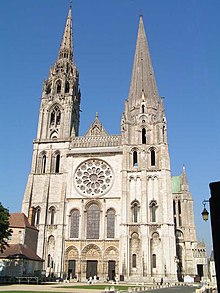


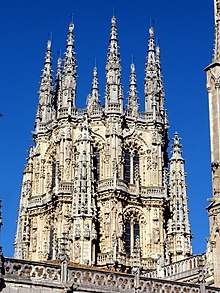
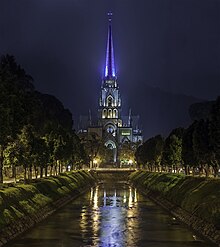




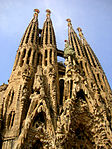






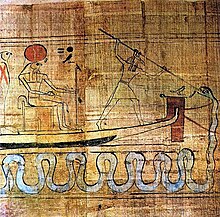
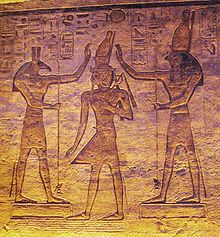











No comments:
Post a Comment